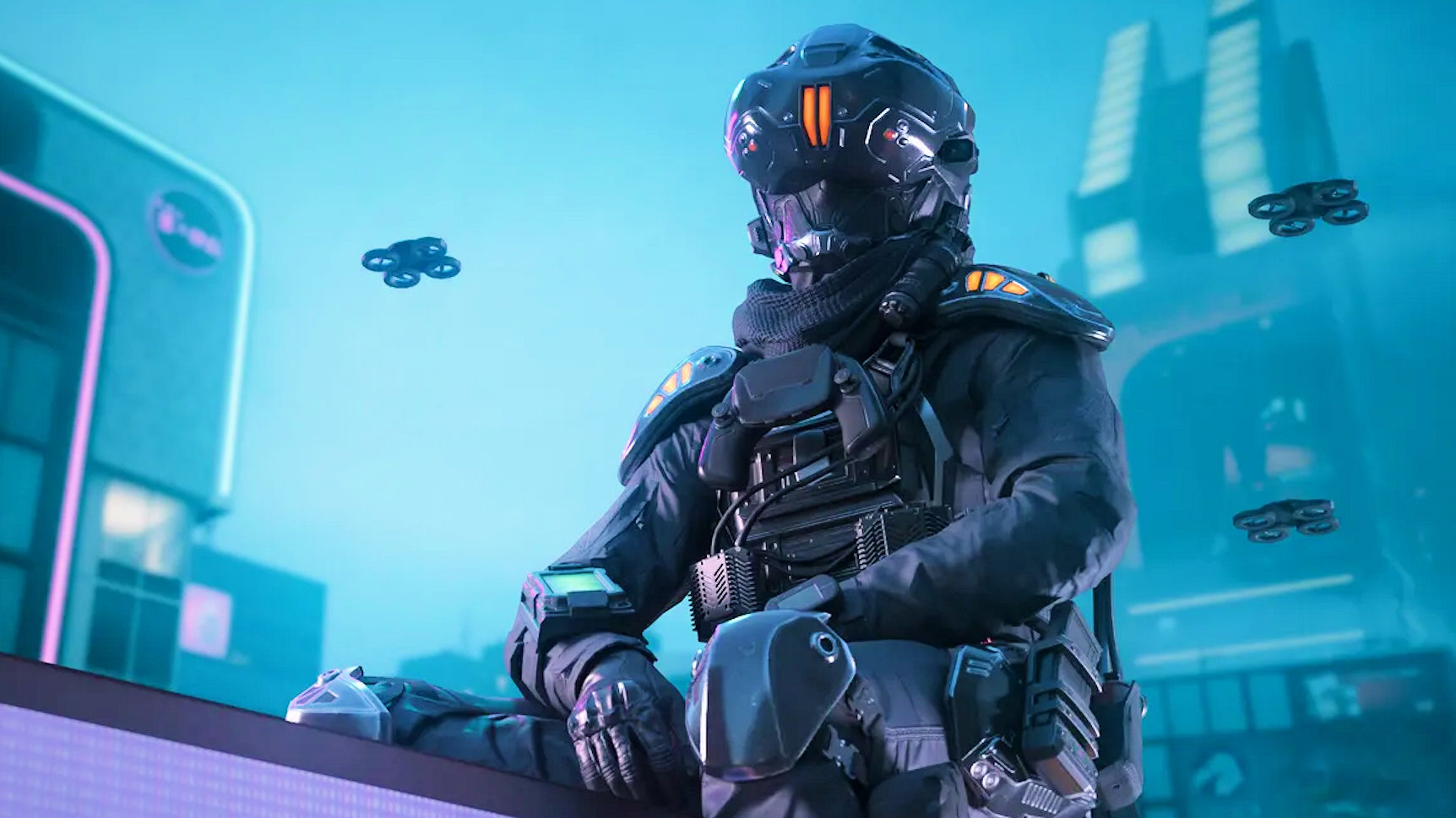geoDefense - Review
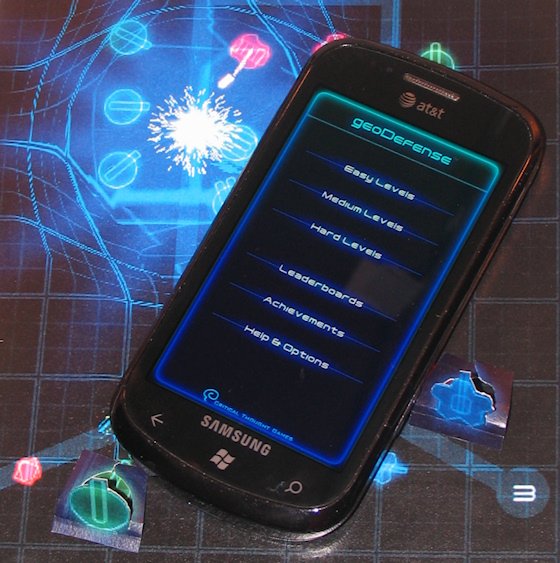
As the plethora of tower defense games on the Windows Phone marketplace proves, tower defense games aren’t hard to make. But they are hard to do well. Just look at the first two tower defense games on Xbox Live: Zombie Attack! 2 is an undercooked snooze-fest and Battle for Hoth is too difficult to be much fun. Both games stray unsuccessfully from tower defense conventions, whereas geoDefense from Critical Thought Games is the exact opposite. It’s as traditional as they come, but also tremendously fun.
geoDefense’s claim to fame is its Geometry Wars-inspired look. Every tower and enemy is composed of neon outlines, harkening back to the days of vector graphics. It’s an extremely simple but charming look, even if one enemy type resembles Pac-Man a bit too closely. The background, no matter the level, is always made up of black space with a pattern of graph paper-like lines, further enhancing the geometric feel. Explosions create a cool warping effect on the background, adding a clever modern contrast to the retro visuals.
Follow the path past the jump for our full review.
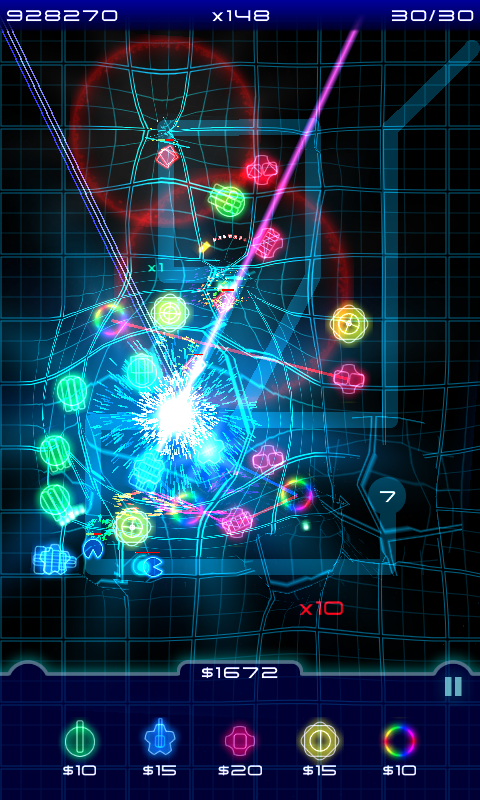
Gameplay
Every level of geoDefense consists of a single linear pathway that leads from the edge of the screen to the player’s base. Waves of enemies (called creeps) approach from off-screen and follow the path’s twists and turns. New waves of enemies emerge at fixed intervals. A button at the bottom of the screen instantly starts the next wave, which comes in handy whenever you’ve spent all of your resources and are ready to get on with things.
Building a defense
To protect the base, players place towers at strategic locations along the path. Towers automatically fire upon enemies that pass within their range. Each tower can be upgraded up to six times. This increases their range, strength, and firing speed. Building and upgrading towers costs money, which is earned by killing enemies. Since money is rather limited at the start of the level, players need to make smart choices about where to place turrets. As the level goes on, money usually becomes abundant, allowing the gaps in your defenses to be filled.
Four, I mean, five towers
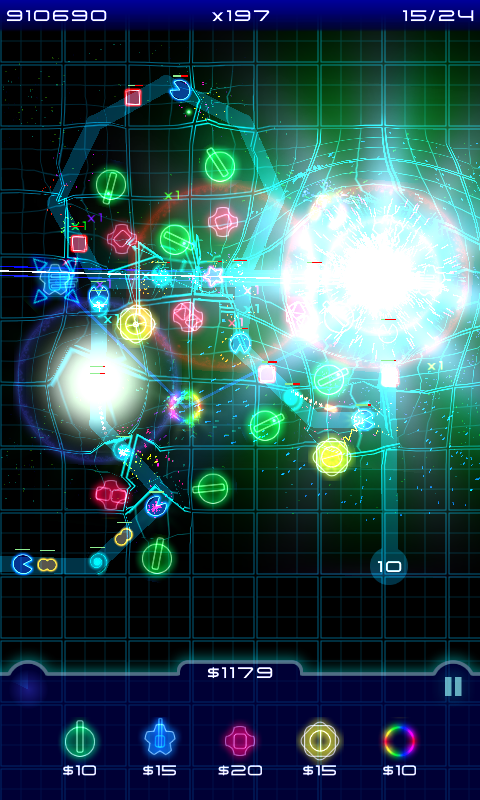
geoDefense has five different towers to build. Depending on the level, some towers may be unavailable.
- Cannon (green): The staple rapid-fire weapon. Cannons are surprisingly useful and a staple of most defenses.
- Laser (blue): The laser fires in a straight line, damaging every creep in its path. They are slow and well-suited to defending long, straight sections of the path. Higher level lasers can be locked into a single position, maximizing damage potential by eliminating time lost from turning.
- Missile (red): Missiles lock onto a single enemy, chasing it down and causing splash damage. They’re most useful in levels with groups of clustered enemies or sections of path that overlap.
- Shock (yellow): Shock towers cause enemies they hit to move slower. Upgraded towers can slow multiple enemies at once. In higher levels, creeps tend to move at blazing speeds. A few well-placed shock towers can be the critical in keeping enemies on-screen long enough to kill.
- Vortex (rainbow): Vortexes are introduced late in the game and even then, they don’t appear in every subsequent level. Once placed, the player links surrounding towers to the shock tower. Creeps destroyed by linked towers provide energy to the vortex tower. Once it amasses enough energy, all linked towers fire an extra-powerful blast. Two vortex towers can also be linked, creating a damaging line of energy between them when fully charged. If all that sounds like a headache, it is. Vortex towers are completely optional and basically amount to putting a little English in your strategy.
Levels
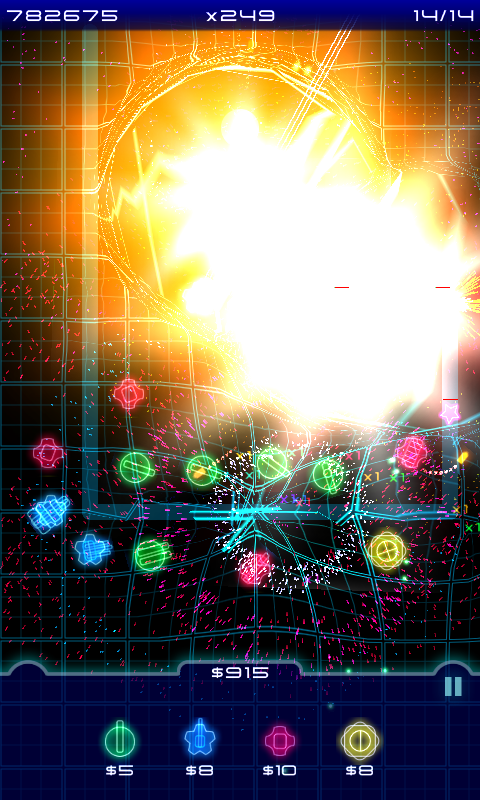
Gamers will receive a fair number of levels in which to hone their strategies. Levels are divided into three sets according to difficulty: 10 Easy, 14 Medium, and 14 Hard. They can be tackled in any order.
All the latest news, reviews, and guides for Windows and Xbox diehards.
Beating a level is one thing, but mastering it is another. The player is allotted a varying number of lives per level. Whenever a creep reaches the base, a life is lost. A level can still be won as long as you have a life remaining. However, to get a star on a level, it must be cleared without losing any lives. Thus harder levels may take several tries before they are mastered, adding some welcome playtime to the game.
Balance issues
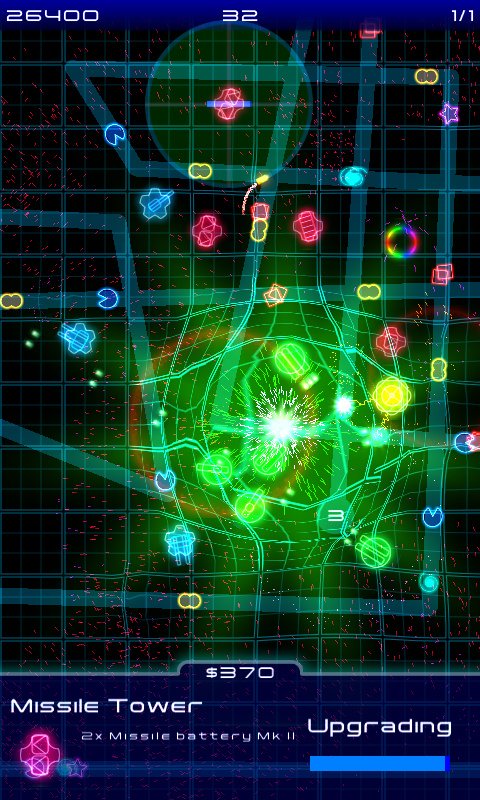
Less welcome is geoDefense’s sometimes frustrating difficulty. First off, independently of what set of levels is selected, the game defaults to an overall Hardcore difficulty. Some Medium and Hard levels seem to be literally impossible to win in Hardcore Mode. I have covered the entire pathway and almost the entire screen with upgraded towers on Medium 3: The Hat, only to fail due to preposterously fast and long-lived enemies. The challenge can be reduced to realistic levels by switching to Novice Mode, which is hidden away in Help & Options and easily missable. Novice should really be the default difficulty - let the masochists choose their punishment on their own.
Even in Novice Mode, geoDefense still suffers from uneven difficulty spikes. For instance, Medium 3 is tougher than any other medium level, and Hard 2: Angular View is generally regarded as the hardest level in the game. Wouldn’t a smoother difficulty progression in which the most challenging levels come last make more sense? Yes. Yes it would.
Design mysteries
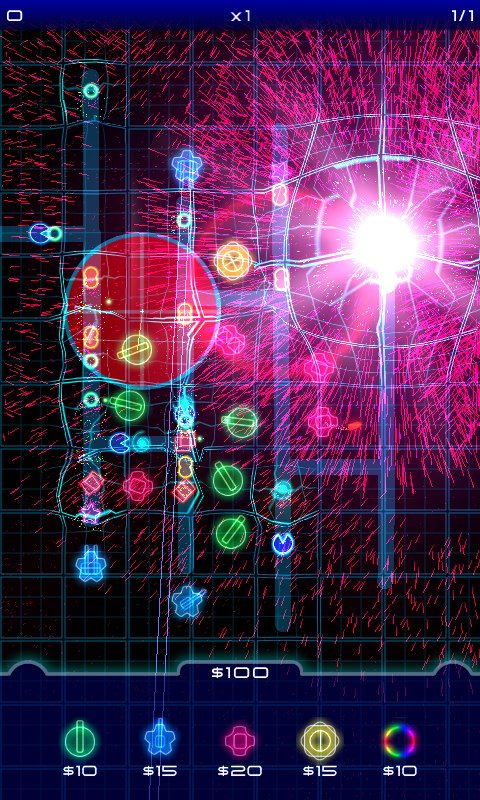
My other complaint regarding balance issues is less off-putting but more bewildering. Nowhere in the game (or even on the internet) does geoDefense convey the stats of any tower or upgrade. You can generally observe that range always increases with an upgrade and that level 7 turrets get a huge increase in range over level 6 but fire much slower. Still, knowing the exact stats of each level would facilitate planning for tough situations.
Why are tower stats kept hidden? Apparently they vary by level. What’s more, the cost of building and upgrading towers is different on some levels than others. The amount of money awarded from killing creeps changes too. Tweaking all of those values allows the designer to make any given level as easy or hard as he pleases, and yet the second level in a set is harder than the final level. I would prefer consistent values in building and upgrading costs as well as turret stats.
Sound

I’ve already mentioned geoDefense’s sharp looks. I’m a little less enthusiastic about its sound. The sound effects are perfectly adequate. Unfortunately, the game has absolutely no music. geoDefense sold boatloads on iOS before migrating to Windows Phone, so it’s not like Critical Thought couldn’t have afforded to add music somewhere along the way. Still, as with Doodle Jump, the silent soundtrack isn’t a deal breaker – just a shame. An upbeat techno soundtrack would fit geoDefense’s vector vibe perfectly.
Achievements
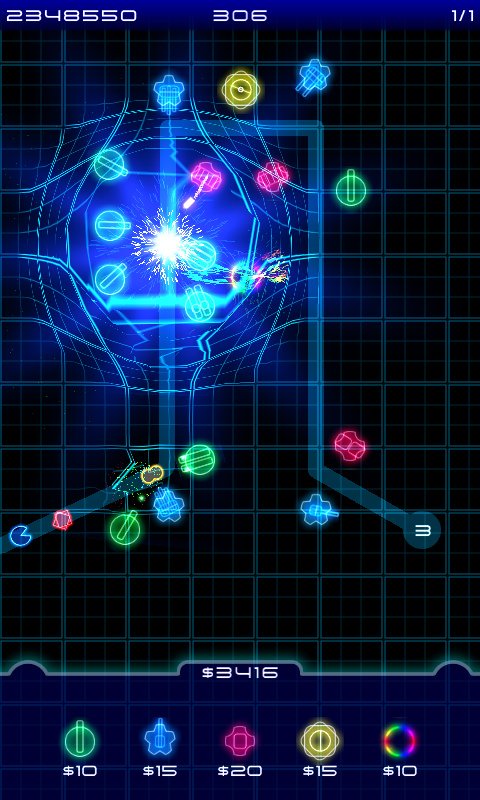
Enough with the criticizing; let’s get back to praising geoDefense. Most gamers will never unlock all of Battle for Hoth’s Achievements due to their steep difficulty, and Zombie Attack! 2’s require a Brobdingnagian level of patience. geoDefense’s Achievements, by comparison, are a walk in the park. Once players change the difficulty to Novice, none of them should provide much trouble. Even the potentially frustrating Achievements for perfecting Medium and Hard levels are surprisingly reasonable: instead of requiring all 14 levels of each set to be perfected, only 10 are required. Thus players can skip over levels like Angular View and still end up with geoDefense’s full 200 GamerScore.
Overall Impression
geoDefense may not be the absolute finest tower defense game on Xbox Live (that honor goes to Plants vs. Zombies) but it is still a terrific title. Nothing it does rocks the boat, but that makes the game easy to understand and get into. Spikes in difficulty and the variable nature of tower costs and powers are minor annoyances that keep geoDefense away from perfection. But the game offers plenty of strategic fun and easy Achievements at a relatively low price, so strategy fans should lower their defenses and consider an immediate purchase.
geoDefense costs $2.99 and there is a free trial. You’ll find it here in the Windows Phone Store.

Paul Acevedo was formerly a Games Editor at Windows Central. A lifelong gamer, he has written about videogames for over 15 years and reviewed over 350 games for our site. Follow him on Twitter @PaulRAcevedo. Don’t hate. Appreciate!
